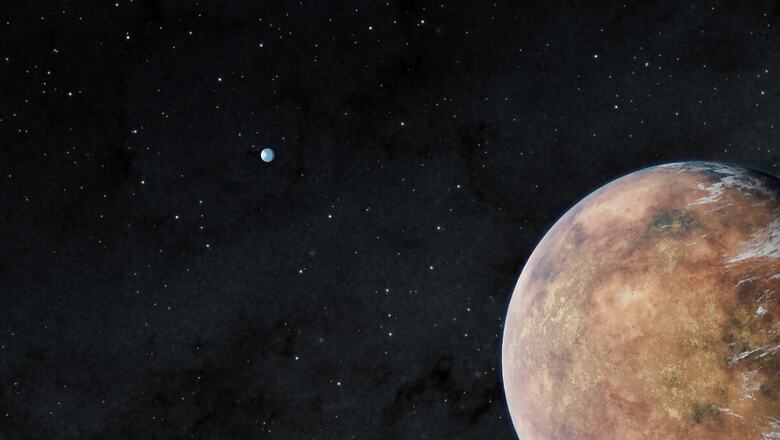
views
Astronomers have made an exciting discovery as they spotted a new planet that is “practically the same size” as earth. This new planet is named Speculoos-3b, as it was detected by the Speculoos (Search for Planets EClipsing ULtra-cOOl Stars) global network of robotic telescopes. The Speculoos project aims to find rocky exoplanets around ultracool stars, such as red dwarfs and brown dwarfs. Funnily, Speculoos is also the name of a popular biscuit from Belgium. The new planet, Speculoos-3b, is located 55 light years from earth. It orbits around a red dwarf star. The red dwarf stars are small stars that are cooler and much smaller than the Sun.
Speculoos-3b orbits around its red dwarf star once every 17 hours. This means that a year on this planet is shorter than one 24-hour day on Earth. What also makes this new planet special is its endless day and night. This means that one side of the planet stays perpetually in the “day”, while the other side always stays in the “night”.
Michaël Gillon, an astronomer at the University of Liège in Belgium, explained this phenomenon to The Guardian as, “We believe that the planet rotates synchronously, so that the same side, called the day side, always faces the star, just like the moon does for the Earth. On the other hand, the night side would be locked in endless darkness.”
Back in 2000, a similar discovery was made when space scientists found TRAPPIST-1, a cool red dwarf star with seven known planets. This red star was in the Aquarius constellation. It was 40.66 light-years away from Earth. The TRAPPIST-1 is believed to be 7.6 billion years old, which makes it older than the Solar System.
The red dwarf stars make up about 70 per cent of the stars in our galaxy. They are believed to be the oldest stars in the universe. However, since their light is so faint, it becomes hard for astronomers to find them or detect planets orbiting them.
Scientists believe that despite being much cooler than the sun, the planets around red dwarf stars can be warm enough to sustain some life forms. However, in the case of planets like Speculoos-3b, sustaining a lifeform on this planet seems unlikely considering it is too close to the red dwarf star. This closeness exposes it to heavy radiation that can make it hard for any life form to sustain. It will be interesting to see what other findings are made about Speculoos-3b and its star.

















Comments
0 comment